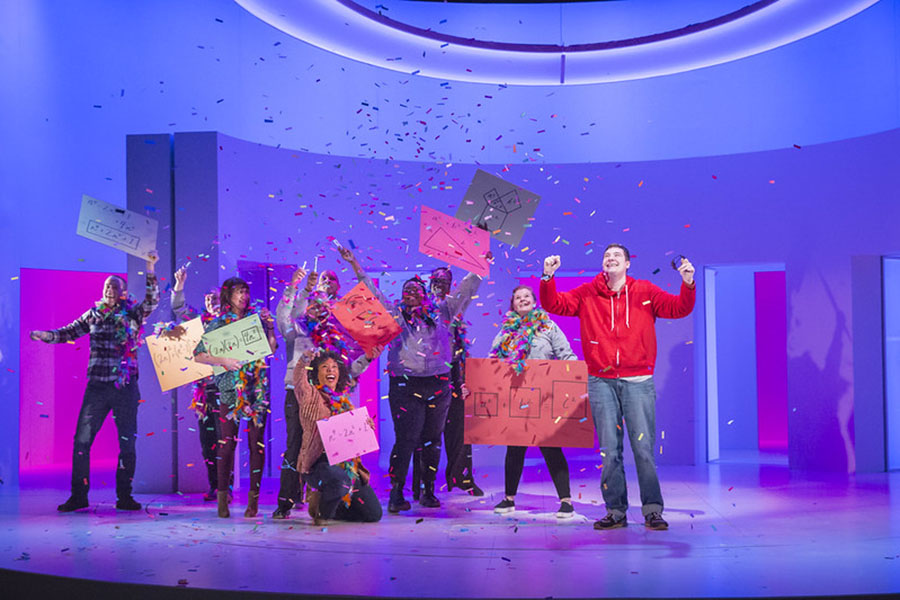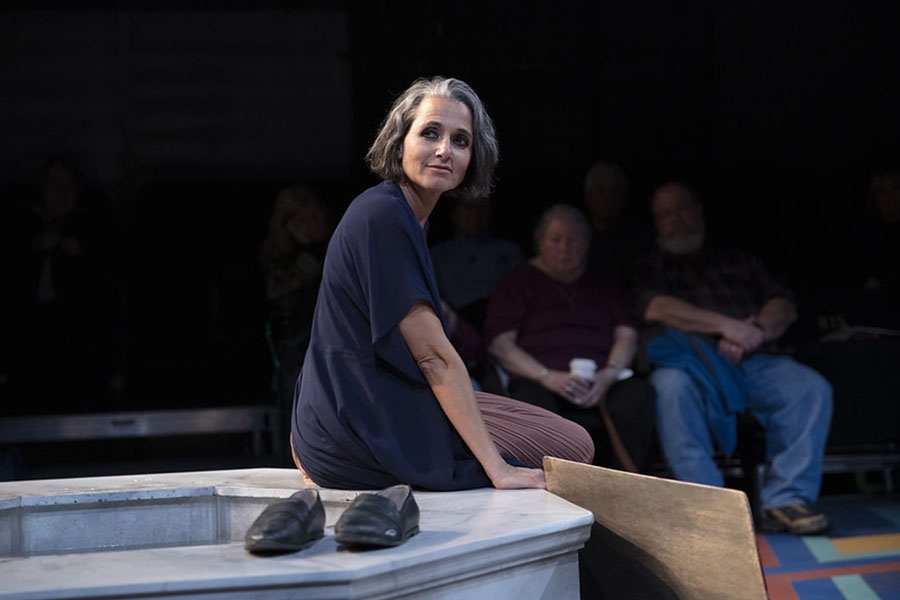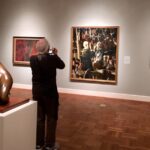As COVID-19 halts public gatherings, arts organizations rise to the occasion to protect their fragile institutions.
Portland Center Stage had just opened The Curious Incident of The Dog in the Night-Time. A Broadway smash hit, managing director Cynthia Fuhrman was confident from the overwhelmingly positive audience response that the show would make enough in ticket sales to offset the hefty production costs, large cast and royalties associated with the production.
Then, the theatre went dark.
With Gov. Kate Brown’s statewide ban on gatherings of 25 people or more, an effort to contain the global outbreak of coronavirus, performing arts organizations across the state have been forced to shut their doors.
 Cast ofThe Curious Incident of the Dog in the Night-Time. Photo by Owen Carey/Courtesy of Portland Center Stage at The Armory
Cast ofThe Curious Incident of the Dog in the Night-Time. Photo by Owen Carey/Courtesy of Portland Center Stage at The Armory
After the announcement, arts professionals sprang into action, contacting state and federal legislators, as well as organizations such as the Oregon Arts Commission and the National Endowment for the Arts, to protect Oregon’s cultural institutions, large and small.
“Most arts nonprofits only make it month to month as it is, especially smaller ones,” says Fuhrman. “This is why we are pushing legislators for more grants and paid leave. We are going to do everything we can to make sure these organizations survive.”
For working artists, the impact was sudden and stressful.
RELATED STORY: How Businesses Should Plan for Coronavirus
Lava Alapai is a theatre director based in Portland. She was rehearsing for a show at Corrib Theatre called Kissing the Witch, and was in pre-rehearsal for a musical at the Oregon Children’s Theater when all of a sudden the work came to a halt.
“There are folks in our community for whom art is their only income and shows closed with no warning,” she says. “It’s heartbreaking for our arts community right now.”
People who make their living in the arts face an added burden. Most working artists are independent contractors and ineligible for unemployment.
“Most musicians, teaching artists and performers are not on any sort of payroll. Some dancers are on salary but it’s rare” says Brian Rogers, executive director of the Oregon Arts Commission.
“We’ve been working with the governor’s office and national leaders like [Congresswoman] Bonamici to see how we can support them.”
His commission is collecting data from arts organizations across the state to get a clearer picture of the pending revenue losses. While in the past patrons from the businesses have supported arts foundations through donations, Rogers does not foresee the same level of support next year.
“There has been a strong commitment from the business community to support the arts, but now they are just trying to make it through themselves,” says Rogers.
“I think next year it’s going to look a lot like it did after the 2008 financial crisis, with performances stripped down to the bare bones to save money. Even visual arts exhibits could have a different look than they had before.”
Not only are arts organizations part of a state’s cultural legacy, they are also important factors in a thriving economy. In Oregon, nonprofit arts and cultural organizations contribute nearly $700 million to the state economy and more than 22,000 jobs, according to a 2015 report by the Oregon Arts Commission.
In Ashland the Oregon Shakespeare Festival is not only a large source of revenue, but also a supplier of housing for 120 visiting artists. After struggling against forest fires the past three years, coronavirus means the institution once again faces a season beset by financial difficulty.
Congresswoman Suzanne Bonamici, who represents Oregon’s first district in the House of Representatives, says that funding for the arts is a bipartisan issue and that legislators are doing all they can to make things easier on arts organizations.
“Alongside the emergency relief funding bill, we passed a $7 billon small businesses loan package, and those loans can be taken by nonprofit organizations,” says Bonamici. “It’s not enough but we are working on it. We need things that bring us together now more than ever.”
Bonamici admits coming together is difficult when gatherings of 25 people or more are against the law, but she says people who work in the arts have no shortage of creativity and will find ways to make their work available to the public.
RELATED STORY: Coronavirus: How Will Oregon’s Economy Fare?
So far, Oregon artists are proving her right.
Portland Baroque Orchestra helped to live-stream a concert by professional vocal group Cappella Romana, and has now revised its mission statement to include supporting other arts organizations and artists live-streaming their work.
The Oregon Cultural Trust has released a list of arts organizations which are taking their craft online by streaming performances, readings and recordings of their work. While it may not be possible to see the art live, creators are doing their part to ensure the arts do not fade from memory during the difficult days ahead.
According to Fuhrman, individuals and businesses can support the arts community by not only making donations, but also by purchasing gift certificates, hiring out-of-work artists and considering renting arts spaces as event venues once the ban on large gatherings is lifted.
“Our goal is to come out of this thing limping,” says Fuhrman. “We know how to limp. We’ve limped before.”
To subscribe to Oregon Business, click here.







